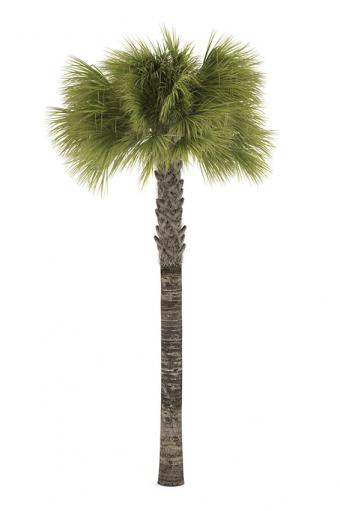The Chilian wine palm (Jubaea chilensis) is the world's most massive palm, reaching 100 feet in height with a trunk up to 5 feet in diameter. The monolithic trees grow very slowly, however, taking hundreds of years to reach this size. In their native Chile, they are cut for their sap which is turned into a product resembling maple syrup. They are drought tolerant and prefer dry, well-drained soil.
Whether you live in the subtropical areas of the country or in a colder climate, there is a palm to fit your landscaping needs - it just may need to be grown in a container and brought indoors for winter. The variety in form and texture is surprisingly diverse, especially if you venture into the specialty palm nurseries where some of the more unique specimens are found.





















